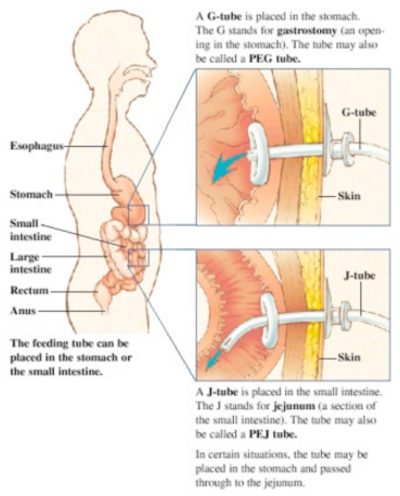PEG Insertion

What is a PEG?
Reasons for having a PEG inserted:
How is a PEG inserted?
Your doctor will use a lighted flexible instrument called an endoscope to guide the creation of a small opening through the skin of the upper abdomen and directly into the stomach. This procedure allows the doctor to place and secure a feeding tube into the stomach. Patients generally receive an intravenous sedative and local anaesthesia, and an antibiotic is given by vein prior to the procedure.
How are feeds given?
How should I care for the PEG tube?
A dressing will be placed on the PEG site following the procedure. This dressing is usually removed after one or two days. After that you should clean the site once a day with diluted soap and water and keep the site dry between cleansings. No special dressing or covering is needed.
How long do these tubes last? How are they removed?
It is important to discuss this with your doctor but PEG tubes can last for months or years. Tubes can break down or become clogged over extended periods of time therefore, they might need to be replaced. Your doctor can easily remove or replace a tube without sedatives or anaesthesia, although your doctor might opt to use sedation and endoscopy in some cases. Your doctor will remove the tube and either insert a new tube or let the opening close if no replacement is needed. PEG sites close quickly once the tube is removed, so accidental dislodgement requires immediate attention.
